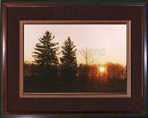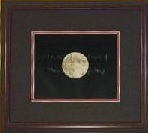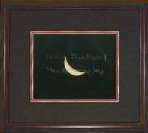|
"First Dawn of the New Millennium" At 6:30 A.M. on January 1,
2000, I left my house for a nearby hilltop to witness the dawning of a
new millennium. I wore my old torn coat, my old hat, and my old worn
gloves; and I carried my old camera. |
|
|
Around 7:00 a.m. the sky was marred by only a wisp of distant clouds that stretched along the eastern horizon. The sun was still well below the horizon, but still the sky brightened to a deep pink with low pencil-thin crimson clouds. I patiently watched the rapidly-changing sky (the precursor to a thousand- year event) without taking a photograph -- anticipating the approaching scene that had been last viewed on this continent by Native Americans in the year 1000. Gradually, Ol' Sol rose closer to the horizon, causing the colors to change in intensity from the deep rich wine tones of predawn to the brilliant yellows of the sunrise. As the first ray of light broke the horizon, my mood changed from a placid appreciation of the grandeur of predawn to an intensity aimed at the urgency of the moment. The light became so brilliant that only quick glances were possible to frame the picture, with longer stares at the frosty leaves in the shadows around me to allow my eyes time to adjust to the sun's intensity. A church bell chimed in the valley, and a distant rooster crowed -- a fitting greeting for the first sunrise of the 21st century. |
|


